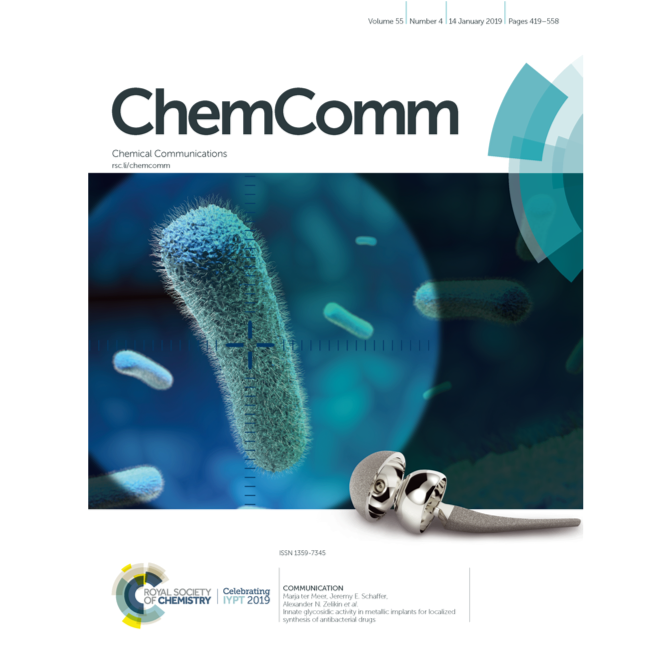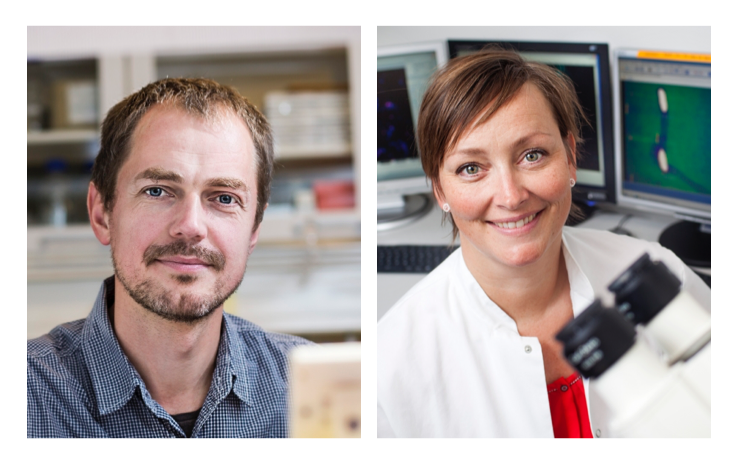Meyer and Zelikin laboratories featured on the cover of Chemical Communications
Interdisciplinary research by AU scientists combines the fields of chemistry and biology in fighting bacterial infections locally on metallic implants by exploiting a build-in feature. The work is highlighted on the cover of the journal ChemComm.


The world’s population is ageing and the need for biocompatible materials, which can be used for replacing defective bodyparts, is increasing. Metal is widely used and is an effective material to support various tissue. Though, a downside is that the metallic implants tend to be breeding grounds for bacterial infections.
In fighting these infections systemic antibiotics for implanted patients has proven less successful and another approach to fight the microbes locally could be to use ‘enzyme-prodrug-therapy’ (EPT). Prodrugs are pharmacologically inactive medications, that are metabolized into an active form within the body.
READ ALSO: AU researchers engineer enzyme-like nanoparticles with potential in prodrug therapy
Glucoronides are prodrugs which demonstrate antibacterial effects upon activation by breakage of a certain chemical bond connecting carbohydrates to the rest of the substance (glycosidic linkage). The research team behind the study has in fact discovered that metallic implants has the ability to break glycosidic linkages. Moreover, the metallic implants efficiently converted prodrugs into anti‐inflammatory and antibacterial agents.
Thereby, the implant itself has shown to mediate EPT-like localized synthesis of drug molecules and their findings establish novel opportunities in biomedical engineering, specifically in the context of implantable biomaterials.
This work was supported financially by the Aarhus University Research Foundation and the European Research Council.
The research has been carried out by scientists from Interdisciplinary Nanoscience Centre (iNANO) and Department of Chemistry at Aarhus University (AU) in collaboration with Radboud university medical center (The Netherlands), Fort Wayne Metals Research Products Corp (USA) and Catholic University Leuven (Belgium). Associate Professor Alexander Zelikin has been in charge of the research team behind the study.
For further information, please contact
Associate Professor Alexander Zelikin
Interdisciplinary Nanoscience Center and Department of Chemistry
zelikin@inano.au.dk – + 23297986 -
